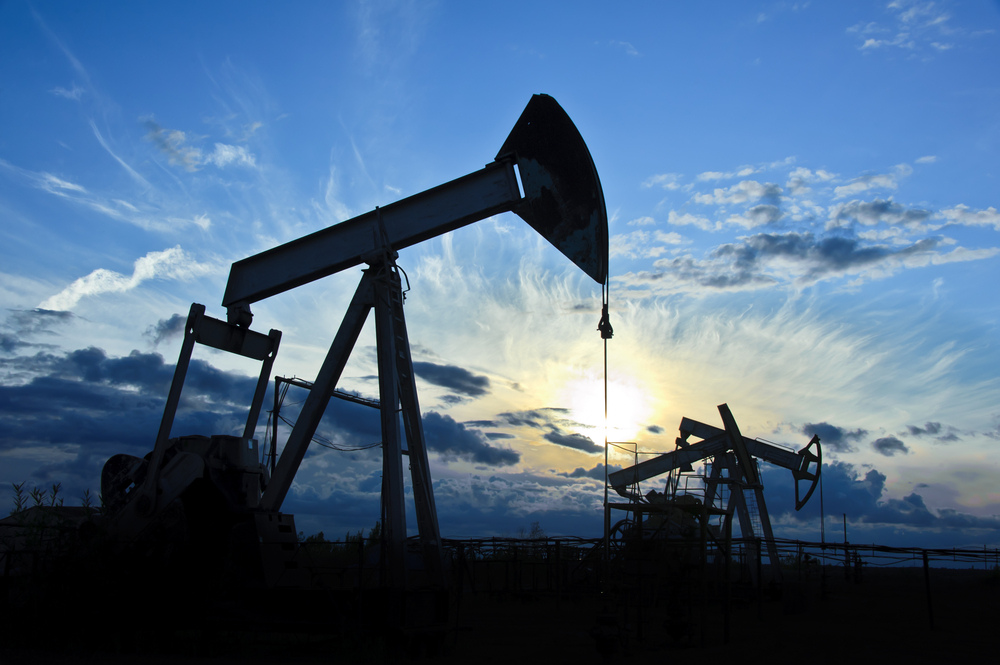By JOHN P. TRETBAR
Drilling activity in eastern Kansas continued to slow down last week even as it picked up west of Wichita. Independent Oil & Gas Service reports just three active drilling rigs in the eastern half of the state, down two, and 31 in Western Kansas, which is up three over the week before. Drilling is underway at one well in Ellis County, and operators are about to spud new wells in Barton and Russell counties.
Baker Hughes reported an increase of ten oil rigs in its weekly nationwide drilling rig count. Texas was down four rigs, New Mexico was up four and North Dakota added three rigs over last week.
Operators filed 12 permits for drilling at new locations across the Sunflower State last week, with just one of those in eastern Kansas. Eleven were west of Wichita, including one in Barton County.
Independent Oil & Gas Service reports operators completed 66 new wells last week across Kansas. Ten of those were dry holes including one in Ellis and one in Barton County. Out of 22 wells completed in Western Kansas last week, seven were dry holes. One producing well and one service well were completed in Barton County last week.
The government said U.S. commercial crude oil inventories increased 8.0 million barrels from the previous week. The U.S. Energy Information Administration says current stockpiles are about nine percent above the five-year seasonal average. EIA said U.S. crude production for the week was down slightly, from the all-time high reported the week before. The total for the week ending January 18 was 11.891 million barrels per day, about two million barrels more than the same week a year ago. Imports averaged 8.2 million barrels per day last week, up more than half a million from the previous week. The four-week average is about 2.1% less than a year ago.
The Lone Star State produced 25% more crude oil last year than the year before. A report from the Texas Independent Producers & Royalty Owners Association pegged the state’s production in 2018 at 1.5 billion barrels. That’s about 4.1 million barrels per day, or about 40% of total production in the United States. EIA estimates that U.S. crude oil production averaged 10.9 million barrels per day last year.
The top oil and gas regulator in Idaho has resigned amid charges he bought and sold stock in an oil and gas company doing business in his state. Governor Brad Little accepted the resignation of Conservation Commission Chairman Kevin Dickey, and said his office would work to fill the vacancy as quickly as possible.
Crude-oil production from the seven largest U.S. shale plays is forecast to climb by 62,000 barrels a day in February to 8.179 million barrels a day, with output from the Permian Basin leading the way. The U.S. Energy Information Administration said Tuesday the Permian, spanning the Texas-New Mexico border, is expected to see the largest climb among the big shale plays, with a monthly increase of 23,000 barrels a day in February.
As the State of New Mexico considers raising royalty rates for oil & gas production on state lands, lawmakers are learning that the state already cllectss a greater share of revenue from the patch than eight other states, including Kansas. Lawmakers in Santa Fed heard from the New Mexico Tax Research Institute, which reported royalties and taxes in the state already return more than 20% of the so-called “production value” of oil developments on state lands. Texas was next at more than 14%. Richard Anklam of the Institute says their new study shows Kansas with the lowest combined taxes and land income as a percentage of energy production. Anklam says thats largely because Kansas has very little production on federal land, and none on state trust lands. According to the study, the states energy operators kicked in more than $201 million to state coffers in fiscal year 2017, out of slightly more than $2 billion in total production value, or a little more than 10%. That includes personal income taxes, severance taxes, ad valorem property taxes, sales and use taxes, and revenue from the feds.
Saudi Arabia plans to build an oil refinery and a petrochemicals plant in South Africa as part of $10 billion of investments in the country. According to Reuters, the Saudi Energy Minister announced Saudi oil would be used in the planned refinery. Construction will be led by state energy company Saudi Aramco. The exact location of the refinery and petrochemicals plant will be finalised in the coming weeks.
Oil tankers exporting crude from ports in the Black Sea are contending with spiraling delays when navigating Turkey’s key shipping straits, stalling the delivery of millions of barrels rom Kazakhstan and Russia to refineries on the Mediterranean Sea and beyond. According to a report from Bloomberg, the long lines are blamed on rule changes requiring more vessels be escorted by tugboats. A local port agent estimates tankers holding about 39 million barrels of oil are being held up.

